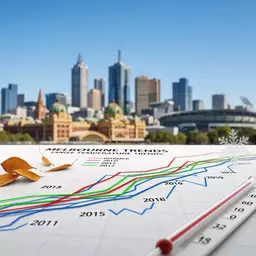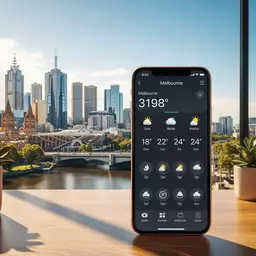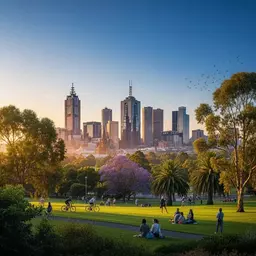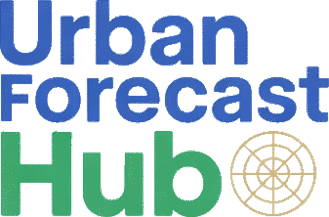Melbourne's Urban Climate and Weather
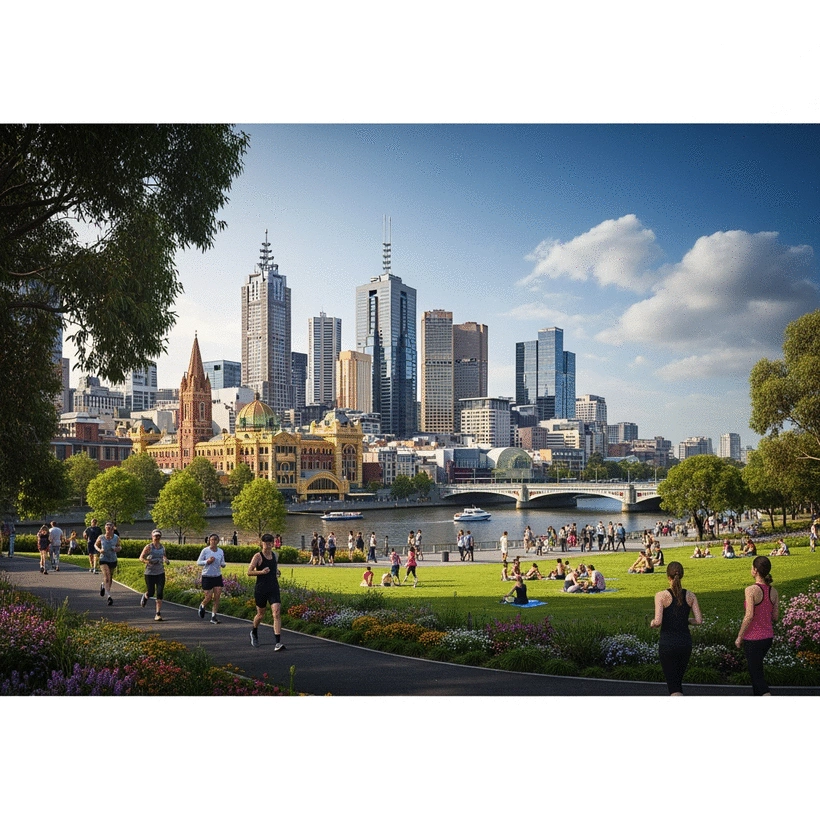
Have you ever stopped to consider how your surroundings influence your daily weather experiences? Melbourne's unique urban climate shapes not just the forecast but also how we navigate our lives. Understanding this relationship can empower us to make informed decisions as we adapt to our dynamic environment.
What You Will Learn
- The urban heat island effect causes higher temperatures in Melbourne's urban areas compared to rural surroundings.
- Vegetation plays a critical role in cooling the city and improving air quality through carbon sequestration.
- Melbourne's diverse geography results in distinct microclimates that affect weather patterns across different neighborhoods.
- Community engagement and maintaining green spaces are essential for enhancing resilience against extreme weather in urban settings.
Melbourne's Urban Climate Influencers
Melbourne's unique weather patterns are shaped by three primary factors: the Urban Heat Island Effect, Vegetation, and Microclimates. These elements collectively determine the city's distinctive climate experience. To gain a deeper understanding of how these factors contribute to warmer temperatures, explore Melbourne's Urban Temperature Trends Explained.
Urban Heat Island Effect
- •
Concrete & asphalt retain heat longer.
- •
Reduced vegetation exacerbates heat.
- •
Increased energy use further elevates heat.
Role of Vegetation
- •
Trees lower temps by up to 5°C (evapotranspiration).
- •
Absorbs CO2, helping combat climate change.
- •
Filters pollutants, enhancing air quality.
Local Geography & Microclimates
- •
Higher areas often have cooler temperatures.
- •
Coastal areas benefit from moderating sea breezes.
- •
Tall buildings alter local wind patterns.
Understanding Melbourne's Unique Urban Climate
Melbourne’s weather isn’t just a talking point; it’s an experience that shapes our daily lives. One of the most significant factors affecting this is our urban climate. The interplay between urban infrastructure and natural elements results in a unique climate that carries implications for everything from our daily activities to long-term environmental planning.
As a meteorologist with a deep passion for our local climate, I've seen firsthand how various elements contribute to the complexities of weather forecasting in Melbourne. In this section, we will explore how the urban heat island effect, vegetation, and geographical features come together to create the city’s distinctive climate.
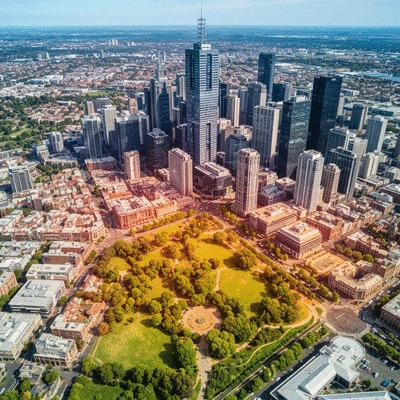
The Urban Heat Island Effect in Melbourne
The urban heat island effect is a term that frequently arises when discussing Melbourne’s weather, especially during those long, hot summers. This phenomenon occurs when urban areas experience higher temperatures than their rural surroundings due to human activities and infrastructure. Our buildings, roads, and other structures absorb and retain heat, leading to elevated temperatures that can make even the hottest days feel unbearable. For a detailed explanation of this phenomenon, refer to Melbourne's Urban Heat Island Explained.
- Heat Retention: Concrete and asphalt retain heat longer than natural landscapes.
- Reduced Vegetation: The lack of trees and green spaces exacerbates heat levels.
- Increased Energy Use: Higher temperatures lead to more air conditioning use, further elevating heat.
Understanding the urban heat island effect is crucial for residents and businesses alike. By recognizing this phenomenon, we can better prepare for heatwaves and make informed decisions on how to manage our environment during these challenging periods.
How Vegetation Shapes Weather Patterns
As we navigate our bustling city, we might overlook the significant role that green spaces play in moderating temperatures. Vegetation not only beautifies Melbourne but also helps to cool our streets and homes. The presence of trees and parks can lower surrounding air temperatures by providing shade and releasing moisture into the atmosphere through a process known as evapotranspiration.
- Cooling Effect: Trees can lower temperatures by up to 5 degrees Celsius.
- Carbon Sequestration: Vegetation absorbs CO2, helping combat climate change.
- Improved Air Quality: Green spaces filter pollutants, enhancing our overall health.
By investing in and maintaining our green spaces, we can enhance our community’s resilience against heat extremes. Engaging with local parks and gardens is a fantastic way to appreciate this natural cooling system while also boosting our well-being!
Microclimates Within Melbourne: Local Geography's Role
Melbourne is a city rich with diverse topography, from the hills of the Dandenong Ranges to the flat coastal plains. This variety creates microclimates—small areas with distinct weather patterns that can differ significantly from one neighborhood to another. For instance, areas near the bay often enjoy cooler breezes, while inland suburbs may experience more extreme temperatures.
- Elevation Variations: Higher areas tend to have cooler temperatures compared to lower regions.
- Proximity to Water: Coastal areas benefit from moderating sea breezes.
- Urban Features: Tall buildings can create wind tunnels and alter local wind patterns.
Recognizing these microclimates can help us make better decisions when planning outdoor activities or understanding potential weather impacts. By staying informed about these local variations, we can adapt our lifestyles to respond to Melbourne’s ever-changing climate.
Did You Know?
Studies have shown that urban areas can be up to 5 degrees Celsius warmer than their rural counterparts due to the urban heat island effect. This temperature difference can significantly impact energy consumption, air quality, and overall public health.
Summarizing the Influence of Urban Climate on Weather Patterns
As we dive deeper into Melbourne's intricate relationship with its urban climate, it becomes clear how significantly our environment influences daily weather patterns. The urban heat island effect, shaped by concrete and asphalt, notably raises temperatures, especially during heatwaves. This phenomenon can lead to challenges in predicting weather accurately, as our local weather systems are often affected by factors like vegetation and urban geography. For more insights into how to navigate Melbourne's weather, check out Melbourne Weather: A Resident's Guide.
Understanding these dynamics helps us appreciate the complexity of weather forecasting in Melbourne. For instance, the interplay between coastal breezes and inland heat can result in sudden changes in temperature and precipitation. Here are some key takeaways to remember:
- The urban heat island effect elevates temperatures, especially in densely built areas.
- Green spaces play a crucial role in moderating local climates and improving resilience.
- Melbourne's varied topography creates microclimates, leading to diverse weather experiences across neighborhoods.
By grasping these concepts, we can better navigate the challenges posed by Melbourne’s unique urban landscape. It’s essential for us, as a community, to stay informed and adaptable, enabling us to respond to the weather's whims effectively.

Taking Action: Enhancing Community Awareness and Preparedness
At Urban Forecast Hub, we believe that community engagement is vital in addressing the effects of our urban climate. I encourage each one of you to actively participate in local climate initiatives. Simple actions, like enhancing green spaces in your neighborhood or participating in community clean-up days, can make a significant impact. Here are a few personal strategies that can help you cope with Melbourne's weather variability:
- Stay updated with our detailed weather forecasts to plan your day effectively.
- Consider planting trees or maintaining gardens that can help cool your surroundings.
- Engage with neighbors to share resources and tips on adapting to changing weather conditions.
Every small step counts! By coming together and raising awareness, we can foster a culture of preparedness that benefits us all. What initiatives have you taken part in? Sharing your experiences can inspire others to get involved!
The Importance of Public Health in Urban Climate Strategies
As we explore the intersection of urban climate and public health, it’s essential to acknowledge how our environment influences air quality and community well-being. Extreme weather events, such as heatwaves and heavy rainfall, pose risks not only to comfort but also to health. Poor air quality during high temperatures can exacerbate respiratory issues, making it even more critical to integrate health considerations into urban planning.
Here are some crucial aspects to consider when discussing urban climate strategies and public health:
- Implementing green infrastructure can improve air quality and reduce heat exposure.
- Creating awareness programs to educate residents about health risks associated with extreme weather.
- Enhancing emergency response plans to address public health challenges during severe weather events.
By prioritizing public health in our urban climate strategies, we can build a healthier, more resilient Melbourne. Together, let’s advocate for change and ensure our community is prepared to face the challenges ahead!
Frequently Asked Questions About Melbourne's Urban Climate
- What is the urban heat island effect?
- The urban heat island effect describes how urban areas experience higher temperatures than their surrounding rural areas due to human activities and infrastructure that absorb and retain heat.
- How does vegetation help cool the city?
- Vegetation, particularly trees, cools the city by providing shade and releasing moisture into the atmosphere through evapotranspiration, which can lower local temperatures by up to 5 degrees Celsius.
- What are microclimates, and why are they important in Melbourne?
- Microclimates are small areas with distinct weather patterns. In Melbourne, diverse topography (like coastal areas versus inland suburbs or elevated regions) creates these variations, influencing local weather experiences and requiring localized adaptation strategies.
- How can community engagement help mitigate urban climate challenges?
- Community engagement through initiatives like enhancing green spaces, participating in clean-up days, and sharing resources can foster preparedness and resilience against extreme weather events, benefiting overall public health and well-being.
- Why is public health a key consideration in urban climate strategies?
- Public health is crucial because extreme weather events and poor air quality, exacerbated by urban climate phenomena, pose significant risks to community well-being. Integrating health considerations into urban planning helps create a healthier and more resilient city.
Recap of Key Points
Here is a quick recap of the important points discussed in the article:
- The urban heat island effect raises temperatures in Melbourne, particularly during heatwaves.
- Vegetation plays a critical role in cooling the urban environment and improving air quality.
- Melbourne's diverse geography creates microclimates that affect local weather variations.
- Community engagement in enhancing green spaces can significantly mitigate climate impacts.
- Integrating public health considerations into urban climate strategies is essential for community well-being.
